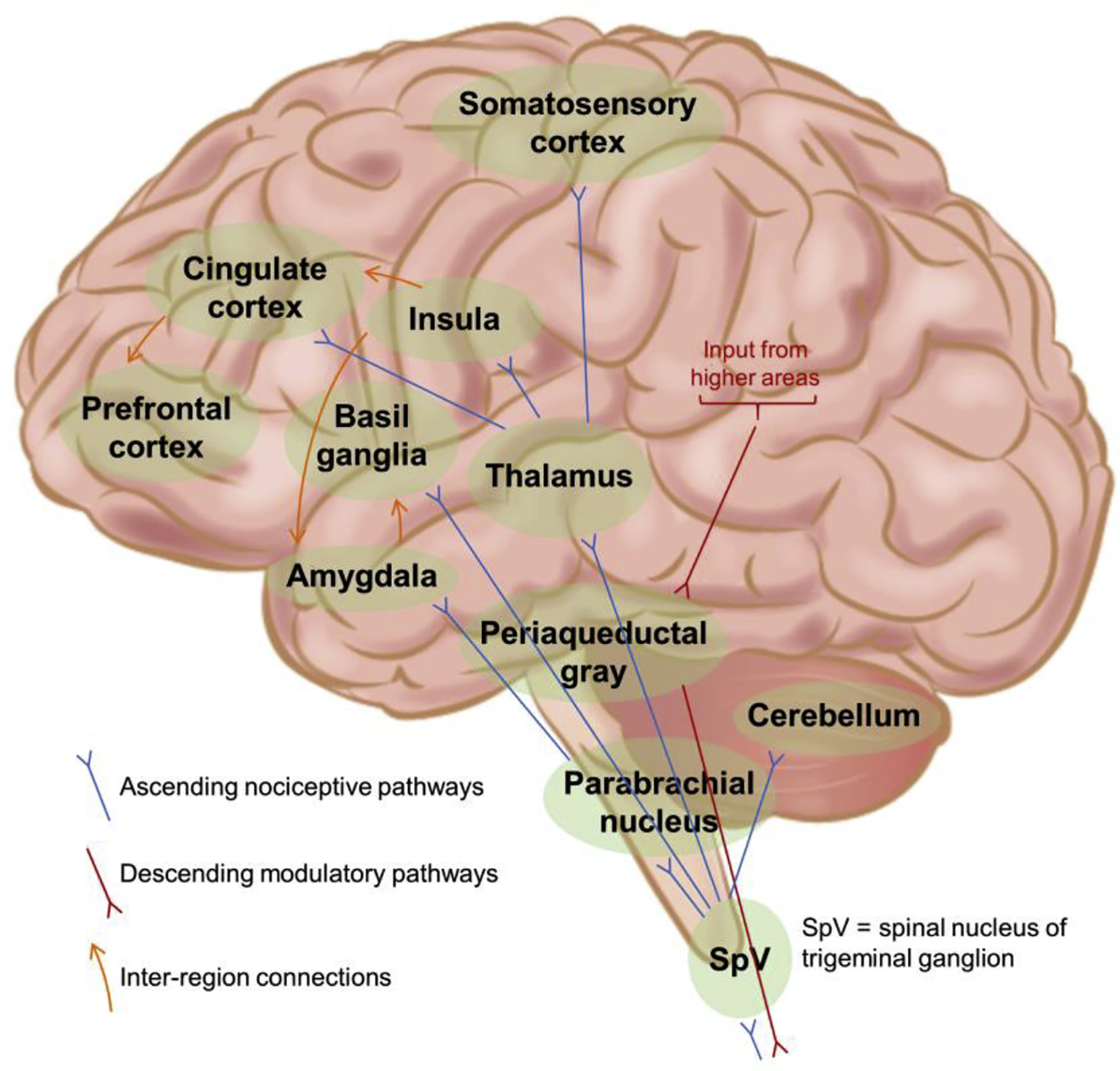Figure 2:

Brain regions and pathways involved in the perception and experience of pain. Nociceptive signals from the periphery travel from the spinal cord into the brain along pathways that include the spinothalamic, spinoparabrachio–amygdaloid and spinoreticulo–thalamic tracts. Information entering the thalamus is relayed to cortical areas that include the primary somatosensory cortex, insula and cingulate cortex. Further connections within the brain to regions such as prefrontal cortex and the amygdala allow for attentional and emotional factors to be incorporated in the experience of pain. Integrated signals from various higher order areas of the brain are transmitted via the periaqueductal gray to the spinal cord to act as descending modulatory influences on the incoming nociceptive signals. Figure adapted from (Simons et al., 2014).
